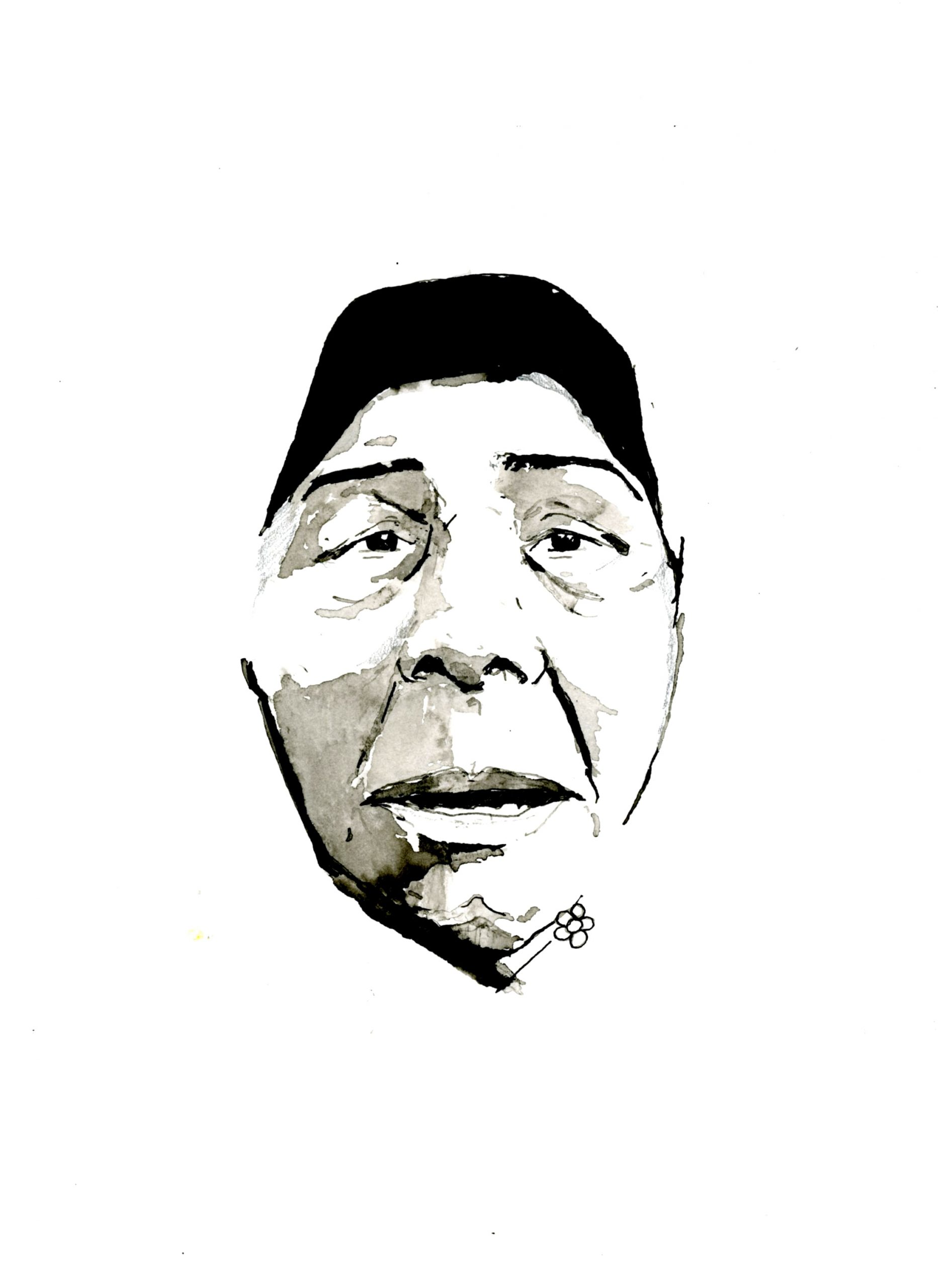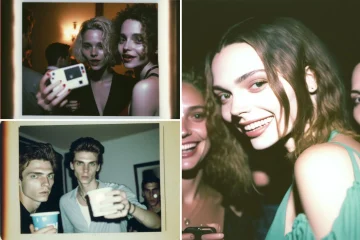
Welcome back to our series, Far-Flung. Eva Clifford is speaking to the best landscape and wildlife photographers from all over the globe about the vistas that have charmed and thrilled their lenses.
This eighth trip on our Far-Flung adventure is a little different. While previously we have spoken to the finest landscape and wildlife photographers from across the atlas, this time we take a detour into the world of reportage illustration.
George Butler‘s drawings, all done in situ, are in pen, ink and watercolour. They represent a fascinating and sometimes difficult balancing act on the thin line between art and journalism. But one thing often shines through the carnage: the humanity of the people he illustrates.
Array
It’s April 2017 in West Mosul, three months since the liberation of the eastern Mosul from the radical militant group Daesh (ISIS). The northern Iraqi city has become a hotspot of violence as thousands of government soldiers and militia groups fight against ISIS’s tightening control of the region, leaving thousands of civilians caught in the crossfire.
Abdul Hamid’s house is one of 53,000 houses destroyed by the conflict in West Mosul. A month ago an airstrike flattened his home, taking the lives of his mother, two of his brothers and one of their wives. Now, Abdul has returned to salvage anything he can from the debris – but there is nothing left.

“It is an unusual feeling to walk into a place that everyone is leaving,” says British artist-illustrator George Butler, who has documented crises around the world using one of the oldest storytelling mediums on the planet: drawing.
“I have been stared at as if I am lost or mad, and sometimes I have felt as if I’m both. However, by resisting the temptation to turn around and walk away I have made these drawings. I made them in refugee camps, war zones and on the move, and as I drew, people told me their stories.”
Abdul is just one of the people we encounter in George’s latest book Drawn Across Borders – a record of human migration spanning the last decade.
Though the only traces of his home could be counted on one hand – a fragment of wallpaper, an old tile where the kitchen once was, a plastic chandelier suspended from a concrete ceiling and a mangled washing machine – Abdul offered George a seat and a glass of tea, and began to describe what had happened.
“What makes anyone want to share their story in that moment?” says George. “I don’t know but Abdul Hamid did, and I drew and noted it down.”

George’s route into reportage illustration began at university. After doing a foundation at Kingston, he took a degree in Illustration and discovered the work of artists like Paul Hogarth and Ronald Searle, who both used drawing to tell immediate stories in the news. Intrigued by this idea, George recognised how in an industry driven by speed, reportage illustration is one way of dialing back the pace and striking a deeper connection with the audience.
“No one reacts to numbers, they react to people and stories,” he says. “Syrians, and Iraqis and Afghans have been subject to these figures in their own countries for decades – I think journalists, poets, musicians, writers, and illustrators tell individual stories because they know they can influence the next person, even if it is only one person.”
George has since reported on crises in the Middle East, Europe and Africa and his drawings have graced the pages of international publications, such as The Times, Monocle, New York Times, Guardian, BBC, Der Spiegel and NPR.

“My approach is to spend time in a place, often returning multiple times, to use drawing as a ‘handshake’, as Paul Hogarth once said. Then I have an excuse for being there, and as I draw, I’m learning about what I am seeing,” he says.
“In a way you are seeing my notes from class. I’m trying to show, not just tell the audience what is happening. Habits, characters and scenes; it’s the stories that come from this process that I try and do justice to.”

No matter where in the world he’s drawing, George’s attention is always on the people. Using pen, ink and watercolour, he translates the things he sees onto the page: kids playing on a burnt-out tank in the civil war damaged town of Azaz in Syria; overalled workers digging for gold 1,500 metres below ground in a Ghanian mine; refugees huddled around a fire in a warehouse in Belgrade, their worn faces illuminated by the flames.
Perhaps what is so compelling about George’s work is that it straddles the thin line between art and journalism. As much as they are about connecting to the audience, his drawings are also about bearing witness.
Array“We live in an increasingly interconnected world but run the risk of having a far shallower understanding of it,” he says. “If you agree that the way in which we receive our news is now flawed, or ‘fake’, perhaps headlines are written for effect, perhaps paid content is disguised as news, or photographs manipulated to shock, then it’s not a stretch to suggest that a drawing, done from life, on location with the permission of those in the image can be an equally accurate description of that time and a place.”
In fact, George’s drawings are almost like long exposures (in photography). Always drawn in-situ, the events unfolding around him will often guide the finished result. A drawing might end up half-exposed, or half-completed because a bomb has landed nearby or the person he’s drawing has moved, or decided they don’t want to be drawn after all.

“In a way these drawings are a reaction to immediate things that happen,” he says. “I once sat with a group of men supporting the uprising on the Syrian/Turkish border; they thought I was a spy and asked me to draw one of them to prove I wasn’t. Which I did – very badly.”
Another time, George had a run-in with a horse owner in Transylvania who was upset because he was drawing his horse. “He was drunk so his solution to the problem was to punch my mate Stefan, rip the drawings in half (now framed in my studio), get out his penis and ask if I wanted to draw that. We didn’t hang around long enough to find out whether he was an aspiring life model.”

Most of his encounters have been positive though, with many resulting in lasting friendships. For George, the process behind his work is crucial. He takes time to choose a subject and he usually sits or stands while he draws. Sometimes, crowds of curious onlookers will gather and peer over his shoulder as he works.
“I want people to feel unthreatened and to look at what I am doing,” he says. “It is from that moment that the conversations start and suddenly I’m not just making a drawing of a street, but a drawing accompanied by the story of someone who knows it better than me.”
ArrayAlongside one picture, George shares an experience he had in 2013 while visiting a field hospital in Syria: “War photographers often talk about hiding behind the camera, I did the same behind my drawing board. I drew Bassam, who was ten. Three days earlier, he had lost his mother, brother and left leg in an airstrike. The nurse came in and pulled the blankets from Bassam’s bed to reveal his injury. She said nothing but I knew what she was telling me: ‘if you want to know what really happens here, look at this…’
“Bassam’s father Abid sat at the foot of the bed, in black, occasionally putting a reassuring hand on his son’s foot as he struggled through the painkillers. ‘Art cannot change anything,’ he said, and in this moment I believed him. My instinct was to leave without finishing the drawing. But another man in the corner said passionately, ‘These are the sorts of scenes the world should see. They are important to show the people what is going on here.’”

It’s an anecdote that highlights the conundrum artists and journalists face in the field, urging the question: is this work enough? George believes in the necessity of telling these human stories because “constructive reaction, energy and the desire to do something comes from a closer connection to a personal tragedy”. Under different circumstances, he reminds us this could be any one of us.
“What has become clear to me as we begin a new decade – as the population increases, resources remain limited and climate pressure mounts – is that migration will vastly alter the future of the world and our species. Only by understanding individual cases better can we properly respond to migration as a whole,” he says.
“I hope my drawings are human, straightforward and unthreatening, that they connect the viewer to that subject through a sensitive and handmade line; an imagined connection that can relate one person to another who otherwise would never have crossed paths.”
You can see more of George’s work here.
Drawn Across Borders (published by Walker Studio, 2021) is available to purchase now.



